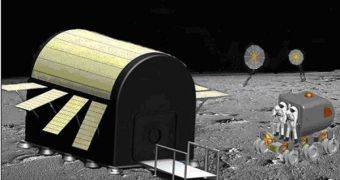In addition to the economical and political issues that a future lunar base would have to overcome in order to get approval for its creation, future astronauts living in the outpost would have to face a very serious problem – that of radiation coming from cosmic rays and solar flares. When exposed to these environmental factors for extended periods of time, the DNA inside living creatures suffers extensive mutations, which have the potential to be fatal. In a brainstorming session of sorts, students were asked to come up with possible defenses against these radiations.
Although they may not come true anytime soon, NASA has at this point plans to create a lunar outpost by 2020. If the plan is maintained and followed, then members of the Constellation Project, as in the ARES I and V delivery systems, the Altair Lunar Lander, and the Orion Crew Exploration Vehicle, would have to make this possible between 2018 and 2020. However, at this time, there is no clear strategy in place as to how Mission Control would ensure its astronauts do not suffer terrible faiths on the natural satellite. In addition, the amounts of dust on the Moon also create a lot of problems.
“We had many factors to consider in developing this outpost cover – not just being able to protect against radiation. The product needed to be as lightweight as possible to feasibly fit on the transportation module, and have the ability to be easily erected by a minimum number of astronauts for immediate use once landing on the moon,” North Carolina State University (NCSU) engineering student Michael Sieber, one of the developers of the blanket shield, explained in a statement.
The device is entirely made up of a lightweight polymer, and is based on a very simple construction. The outer layer is covered in solar cells, able to generate at least some amounts of the electricity that the outpost would need, while the inner layer is covered in a radiation-deflecting material, which is able to deflect incoming particles away from the astronauts and their equipment. NASA has yet to formulate an opinion on the device, but the June deadline for the competition, in which 14 other teams have signed up, is drawing nearer. Over the next few years, we could see some of the devices that win this competition being implemented in the American space agency's schedule, Space reports.

 14 DAY TRIAL //
14 DAY TRIAL //